Maintaining a Healthy Lawn
In this article, we will be looking at turf disease and how we can bring resolutions to those problems which can turn a nice healthy manicured lawn into a lawn that’s stressed and dying.
St Augustinegrass
Apart from the maintenance practices that are carried out St Augustine grass also faces the issue of dealing with diseases such as take-all root rot, grey leaf spot, and brown patch disease, if these problems are not correctly identified and dealt with that once beautiful law will become an eyesore.
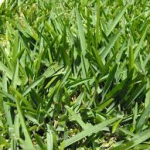
So then we will first be looking at take- all root rot disease, The fungus that is responsible attacks the roots, and because of this, the turf is not able to take up water and nutrients through the normal process. When this happens the turf begins to decline. To learn more about St Augustine grass click this link. Grass-type.
Signs of take-all root rot
Signs are large irregular patches in the turf that turn yellow followed by these areas becoming bare spots where turf once was, the fungus that causes this disease is most active during summer and early fall when the temperature is high.
Another sign to look for is turf has short rotted roots that cause the grass stolons to be easily pulled up from the ground.
Signs of Grey leaf spot
Grey leaf spot develops under moist conditions, signs are an off green and brown color, and moist area on the lawn. The infected areas begin to enlarge because of this fungus and the grass also has purple margins, the affected area may also take on a greyish appearance that is caused by this fungus.
The fungus that causes this disease is most active during warm weather that is accompanied by high humidity, also at this point fertilizers that are nitrogen base should not be used as this helps to increase turfs’ vulnerability against this fungus.
Control methods
Use fungicides to treat the turf area, and water early in the morning so that the turf can dry. Only use fertilizers that are low in nitrogen.
Signs of Brown patch
Brown patch is another disease of St Augustine grass that is caused by a fungus, areas that are affected by this turf turn yellow and begin to wilt as the disease sets in, these areas also turn brown-red. When turf that is affected is pulled on it comes up very easily
This is because rot has already set in, action should be taken immediately in order for turf to recover.
Control methods
Apply fungicides making sure to follow label the direction, also do not use fertilizers that are nitrogen base only but use a balanced fertilizer that will help the grass recover much quicker.
Bahiagrass
Bahiagrass is a turf that can grow into a beautiful lawn once it is maintained properly, however, the major disease problem of bahiagrass is dollar spot.
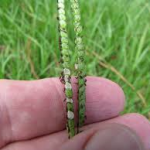
Signs of dollar spot
The fungus that causes this disease is most active when the temperature is warm in the spring and the fall, and when the turf area experiences prolonged moisture. Also, poor maintenance of the lawn contributes to this fungus becoming very active. To learn more about bahiagrass click this link. Grass-type.
Spots appear on turf, the affected areas begin to wilt and die, and other signs may include irregular shapes on turf that has brown-red color along the borders.
Control methods
Apply fungicides to turf areas, also apply nitrogen fertilizer rates of 1/2 pound per 1000 square feet. Watergrass early in the morning to allow to dry out and collect grass clippings at this time to help to control the spread of this disease.
Bermudagrass
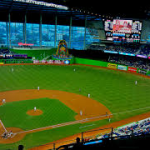
Bermudagrass grows very nicely, especially when maintained in the proper way, the three main common diseases that attack bermudagrass are dollar spot, leaf spot, and brown patch, to learn more about brown patch disease refer to the section in this article under St. Augustine grass that addresses this disease. To learn more about Bermuda grass click this link. Grass-type.
To learn more about dollar spot refer to the section in this article under bahiagrass that discusses dollar spot disease. To learn more about leaf spot refer to the section under St Augustine grass that addresses this disease.
Centipedegrass
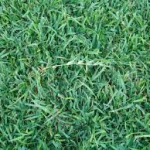
Centipedegrass is another turf that is easy to maintain, this grass-like St Augustine grass is used very widely in the Bahamas, many times I move throughout the country and notice that so many properties use this grass as a lawn to help to beautify their surroundings. To learn more about centipedegrass click this link. Grass-type.
The two major diseases of this turf are dollar spot and brown patch, to learn more about dollar spot and how to bring this disease under control refer to the section in this article under bahiagrass that addresses this issue. To learn more about brown patches refer to the section in this article under St Augustine grass.
Zoysiagrass
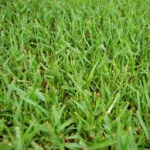
Zoysiagrass once maintained properly makes a beautiful lawn, however like any other turf zoysiagrass has its challenges, The three main disease of this turf is rust, brown patch, and dollar spot. To learn more about brown patch refer to the section in this article under St Augustine grass that discusses this turf disease
Also to learn more about dollar spot refer to the section in this article under bahiagrass that addresses this problem. What we will be looking at is rust disease of zoysiagrass and how to bring this disease under control. To learn more about zoysiagrass click this link. Grass-type.
Rust disease signs of zoysiagrass
The fungus that causes this disease is most active when the weather is warm to humid, the disease appears as light-colored specks on the grass blades. As the disease increases the specks become larger in appearance causing the entire leaf to turn yellow.
This turf disease will also cause the grass to thin out.
Control methods
Apply a fungicide to the turf area after mowing, raking up grass clipping, and removing, this helps to control the spread of rust disease.
The final word
A well-kept lawn does not alone keep down weeds but can also add to the overall beauty of our landscapes and garden increasing the value of our properties, so let’s do our best by putting these methods into practice to ensure that our lawns stay healthy and vibrant.
About the author
Norman loves being in the garden, both at home and for his job....
he is 'Natures Little helper' being outdoors, growing his vegetables and flowers from an early age.
Now having spent over 22 years in the profession he want to give some of his knowledge to others...
his vast array of hints and tips you will find scattered over this site will help you no end growing plants in your garden.

As it happens, we have just had a lawn laid. Up until a few weeks ago, we had copious amount of rain here in the UK with much flooding. It had rained sinced the beginning of November and didn’t stop. We had to wait to have the lawn laid because the ground was too sodden to walk on. Now it’s been laid, we haven’t had a drop of rain and the turf is now shrinking back.
We can’t believe we’ll have to water the lawn after having all the floods but that is what we’ll have to do.
It’s quite cold here in UK at the moment, with the occasional frost. Daytime temperatures are around 50F Hopefully it will warm up.
You seem to have a good knowledge of turf so thought you may be able to give us a few tips? Ches
Hello ches thanks for the follow, lawns are like humans they need tender loving care as you know, Sad to hear that you have to water by hand but if you must then all of that effort will hopefully pay off. Because it is cold you don’t have to water as much. And when the weather warms up water deeply because this would encourage the grass roots to stay within the first 6-8 inches of soil, also it is a know fact that grass only needs water when they show signs like the grass itself begins to wilt, grass takes long to recover from foot traffic, and depending on what time grass you have like st augustinegrass, grass makes a crunching sound when walked on. Other tips would be mowing at the proper height, different turf requires different cutting height, fertilizing with 16-4-8 or some other type fertilizer that is formulated for grass. Hopes this helps, for more know how you can check out my website that deals with grass type. Again thanks for the follow and have a good day.